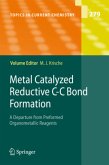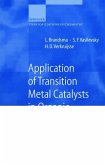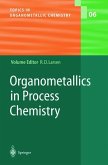TheprototypicalcatalyticreductiveC Cbondformations,theFischer-Tropsch reaction [1] and alkene hydroformylation [2], were discovered in 1922 and 1938, respectively [3,4]. These processes, which involve reductive coupling to carbon monoxide, have long been applied to the industrial manufacture of commodity chemicals [5]. Notably, alkene hydroformylation, also known as the oxo-synthesis, has emerged as the largest volume application of homo- neous metal catalysis, accounting for the production of over 7 million metric tons of aldehyde annually. Despite the impact of these prototypical reductive C C bond formations, this ?eld of research lay fallow for several decades. Eventually, the increased availability of mild terminal reductants, in part- ular silanes, led to a renaissance in the area of catalytic reductive C C bond formation.Forexample,the?rstcatalyticreductiveC Ccouplingsbeyond- droformylation, which involve the hydrosilylative dimerization of conjugated dienes [6 12], appeared in 1969 approximately 16 years after the ?rst - ported metal-catalyzed alkene hydrosilylation [13]. Following these seminal studies, the ?eld of catalytic reductive C C bond formation underwent exp- sivegrowth,culminatingintheemergenceofanevergrowingbodyofresearch encompassing a powerful set of transformations. To our knowledge, no thematic volumes devoted solely to metal-catalyzed reductive C C bond formationhave been assembled. For the ?rst time, in this issue of Topics in Current Chemistry,wepresent acompilation ofmonographs from several leaders in this burgeoning area of research. This collection of reviews serves to capture the diversity of catalytic reductive C C couplings presently available and, in turn, the remarkable range of reactivity embodied by such transformations. There is no indication that this ?eld has reached its zenithanditisthehopeofthepresentauthorthatthisvolumewillfuelfurther progress.








